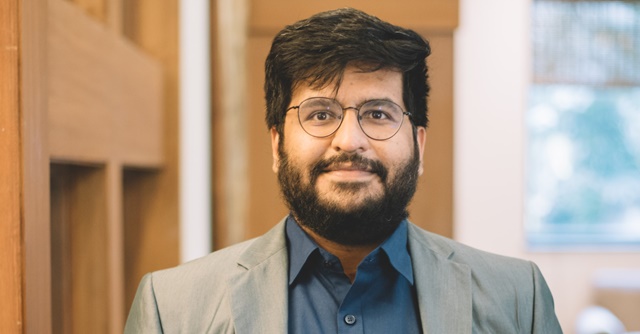
AI will augment healthcare practice, but won’t replace caregivers: Gaurav Parchani, Dozee CTO


Dozee, a Bengaluru-based healthtech firm, started in 2015 by two Indian Institute of Technology (IIT)-graduates, Mudit Dandwate and Gaurav Parchani, offers remote health monitoring services to address the lack of accuracy in patient monitoring in India. The duo, who worked in an automotive company on sensors and related technologies, quit their jobs and replicated the contactless technology, used for detecting a car’s health, to monitor human health, especially to detect sleep quality and flag sleep disorders. In an interview with TechCircle, Gaurav Parchani, co-founder and chief technology officer (CTO) of Dozee, talks about the role of artificial intelligence (AI) in remote health monitoring, how the hospital is using AI-based algorithm and the company’s plans in taking the innovation forward. Edited excerpts:
How are technologies like AI/ML helping in remote health monitoring service and how is it different from the traditional patient monitoring in hospitals?
Technologies like AI/ML are transforming traditional manual patient monitoring in hospitals that often lead to potential delays in identifying critical changes in a patient’s health status and limit healthcare professional’s capacity to deal with it. An automated remote patient monitoring can address this problem significantly. Our AI-based remote patient monitoring system, for example, generates data that is analysed using advanced algorithms to create users’ health profiles. The contactless sensor, placed under the mattress, captures real-time body vitals with an accuracy of 98.4% without using external wires or touching the person physically. The data then further gets analysed by AI-powered algorithms thereby eliminating the need for the constant physical presence of healthcare professionals.

We also built our early warning system, in which AI algorithms can detect patterns and identify potential health risks in large amounts of patient data, including vital signs, medical records, lab results, and imaging reports and provide personalised treatment recommendations. Thus, healthcare providers can optimise patient care and make informed treatment decisions. By automating patient monitoring, nearly 2.5 hours of nursing time is saved every day per patient.
What is your business model and how many hospitals in India have you partnered with so far?
In the current public healthcare setting in India, the nurse-to-patient ratio is 1:40, as against the World Health Organisation’s recommended ratio of 1:4. Thus, the shortage of healthcare professionals as well as ICU beds are prevalent across both the public and private healthcare system. With remote patient monitoring systems in place, healthcare professionals can provide enhanced patient care by converting non-ICU beds to high dependency units (HDUs). Hospitals can adopt these connected beds at a very minimal cost and further drive a holistic patient-centric approach to caregiving. The concept became extremely popular during the pandemic. In 2020, we partnered with 100-odd hospitals in over 30 Indian cities. Today we have more than 350 hospitals, mostly private hospitals, including, MS Ramaiah Hospital in Bangalore, around 11 Apollo hospitals, Bellevue Hospital in Calcutta, SRM Hospital in Chennai, Vijaya Hospital, Chennai. Breach Candy Hospital in Bombay, HN Reliance Foundation Hospital in Bombay, to name a few.

What are your growth plans for the India market in the next 12 to 18 months?
Dozee has raised a total of over $23 million in funding over 5 rounds, with the latest one raised in April, 2023 from a Series A round, with 3one4 Capital and State Bank of India being the most recent investors. We will use the new funds to penetrate deeper into the Indian healthcare market and expand operations globally. The capital will also be deployed to improve the platform’s differentiated research and development (R&D) capabilities. Today we are at 8,000 beds and we are currently aiming to get to 15,000 by the financial year end. This fiscal, we intend to scale up by venturing into tier 2 and 3 cities and expanding in the public hospitals. And we are also working with some of the state governments to see how we can create some benefits there.
Earlier this year, we also forayed into the African markets with Tanzania, Kenya and Uganda and are trying to solve a similar problem there. The US is also a potential market for us and we have got the United States Food and Drug Administration (FDA) clearance only in December last year.
What challenges do you foresee as you venture into tier 2-3 cities and rural areas?

The biggest challenge in India’s healthcare system, especially in small towns and in rural areas is the uneven distribution of medical resources. Lack of better infrastructure and stable internet connectivity, awareness and education on remote patient monitoring technologies, and necessary healthcare resources and support are the various challenges and need a concerted effort from technology providers, healthcare organisations, government bodies, and community stakeholders to solve the problem.
What are the possibilities of AI monitoring tools replacing the jobs of caregivers in the healthcare sector?
Technology, including AI-led systems, can enhance and support nursing care by automating certain tasks, but I don’t see it replacing caregivers’ role now or in the future. AI cannot autonomously make decisions, because the need for human interaction, hands-on care, alongside ethical responsibilities, collaboration and teamwork, will continue to play a vital role. With a lack of trained personnel, caregivers in healthcare today, healthcare providers and tech developers must work closely to create a more efficient, patient-centric healthcare system that improves outcomes, reduces healthcare costs, and ensures that healthcare services are accessible and affordable to all.

